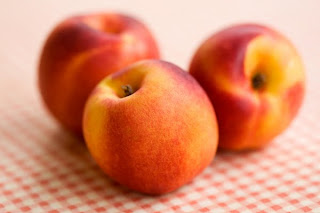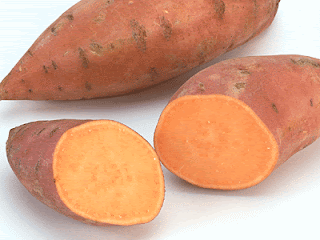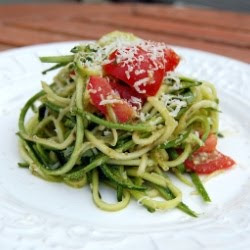
Thoughts: How to breathe properly...
There is something you do approximately 18 times per minute, 1,080 times an hour and 25,920 times a day – and you don't even think about it: breathing. I always thought I breathed correctly - like it was a natural ability of me as a human being! Turns out not the case! Breath is, of course, fundamental to being alive. So why do so few of us know how to breathe properly?
Consider this:
* Science has proven that cancer is anaerobic - it does not survive in high levels of oxygen.
* Shortness of breath and heart disease are directly linked - the heart goes into spasm when it is deprived of oxygen.
* Studies have shown that there is a high correlation between high blood pressure and poor breathing.
* Most emotional issues, including anxiety and depression, result from the nervous system being out of balance. Breathing drives the nervous system.
* Optimal Breathing helps to promote weight loss. Oxygen burns fat and calories.
* Breathing well is the key to sleeping well and waking up feeling rested.
* Breathing provides 99% of your energy. Without energy, nothing works.
* Virtually every health condition and human activity is improved with Optimal Breathing.
"We tend to take sips of a breath," says Boston, "and hold it when we're anxious, both of which can have a ripple effect through the system. One bad habit, like shallow breathing, triggers another. Breathing incorrectly can make you more susceptible to lower back pain.
"On a philosophical level, breathing properly helps to keep the mind open, enabling you to think about who you are and what and why you're doing something. But primarily, if you breathe in the right way, you'll have better digestion, your balance will be improved, and you'll develop an optimum posture."
The diaphragm is the membrane that separates the lungs from the stomach. When we breathe in, our lungs fill up with air pushing the diaphragm down, which in turn makes the abdomen protrude out. During exhalation, the abdomen retreats in automatically.
The Secrets Of Yoga explain how to be sure you breathe correctly, you must divide the breath into three parts; lower abdomen, middle abdomen, and chest.
When inhaling, first fill up the lower abdomen with air, then the middle abdomen, and last the chest. When exhaling, the air in the chest goes out first, then the air in the middle abdomen, and lastly the air in the lower abdomen. You must physically push the abdomen out when inhaling, and in when exhaling. However, when done correctly, there is no need to pull the abdomen in because it is done effortlessly.
You can compare inhalation to filling up a glass of water. The first thing to be filled up is the bottom of the glass (lower abdomen), then the center part of the glass (the middle abdomen), and finally the top of the glass (chest). Likewise, exhaling can be compared to drinking the glass of water. First we drink the water in the top (chest), and second, the middle part of the glass (the middle abdomen), and last the water in the bottom (lower abdomen).
For most people, due to society pressures, breathing is done exactly opposite of how it should be. Studies show us that around 40% of people breathe incorrectly. Breathing incorrectly has definite negative consequences in that you could develop future illnesses. If you can consciously breathe the right way by forcing the abdomen out during inhalation your body will soon pick up this rhythm.
The human brain has many functions and one of them is to follow the breath. If you are able to breathe anywhere from 1 to 4 times per minute , you will experience what is called the meditative state. Breathing is not about just holding the breath in or out, it’s about breathing long and deeply. Do this by breathing very slowly, using the full capacity of your lungs and completely exhaling.
The best way to breath properly is to build up little by little. The lung's capacity starts to expand, and as a consequence your mind becomes calmer, more balanced, and you will be able to concentrate more fully and make better decisions.
The magic of breathing starts when you master exhaling. It seems that during the inhalation, the mind is calmer and one can hold the breath longer without experiencing any discomfort. During exhalation there is a natural urge to inhale immediately after exhalation. When this natural tendency calms down you will be able to reach a higher level of consciousness.
How to hold the breath...
A yogi should master the ability to hold the breath in and out. By relaxing the muscles in the diaphragm, ribs, and abdomen while suspending the breath, one breathes correctly and effortlessly.
Holding the breath in is definitely harder than keeping it out, making breathing correctly a challenge. The reason for this is because the brain reacts when the carbon dioxide (CO2) levels are too high, but not when the levels of oxygen (O2) fluctuate.
Based on this fact, you will be able to hold the breath in or out for longer periods of time by inhaling and exhaling several times. Inhaling or exhaling even slightly will create a change in the levels of the carbon dioxide.
To hold the breath in:
Breathe in by pushing the lower abdomen out, then the middle abdomen, and finally the chest. Hold the breath in and bring the chin in without creating tension in the neck or shoulders.
To hold the breath out :
Exhale by releasing the air in the chest first, then the middle abdomen, and finally the lower abdomen. Hold the breath out, lift the chest, pull the chin in and relax.
Breathe in this manner for as long as it is comfortable. If you start to feel dizzy stop immediately! Remember, breathing can be built up with time so be patient and start slowly.
Long deep breathing...
Long deep breathing is one of the most common ways to breathe. This type of breathing is done by using the full capacity of the lungs in both the inhalation and the exhalation. This is done slowly without rushing the breath. Normally, long deep breathing is done through the nose because it aids in breath control. However, it can be performed through the mouth as well.
Benefits
* Increases the flow of oxygen in the body, which promotes healing and a relaxed state of being
* Prevents and decreases the build up of toxins in the lungs
* Stimulates the production of endorphins and brain chemicals to fight depression
* Expands the lungs capacity which builds concentration, patience, flexibility, and resistance. This also increases the secretion of the pituitary gland which develops intuition
* Pumps the spinal fluid to the brain which increases energy
* Strengthens the aura which reduces insecurity and decreases fear
* Cleanses the blood
* Gives control over the negative emotions which helps to break bad habits
In our regular daily lives, we tend to use just a small amount of our lung capacity rather than their full capacity.
Meditation on the breath...
This is a wonderful meditation to perform when stressed, upset, or in a state of fear.
Start by closing your eyes and meditating on the breath. Feel the flow of air entering and leaving the body. Receive every breath as a gift of life.
Use the mantra “Sat Nam”. “Sat” means truth beyond time and space, and “Nam” means identity.
Be grateful and slow down your breath by breathing completely and using the full capacity of your lungs.
Breathing less than eight times per minute will have such effects like making the pituitary gland secrete. This also stimulates intuition and gives you more awareness. The pituitary gland is also known as the master gland because it regulates nine different glands.
Breathing less than four times per minute will put you in a meditative state.
Source:
www.TheSecretsOfYoga.com
www.Breathing.com
Article - Why do so few of us know how to breathe properly?
Quotes: The nose is for breathing, the mouth is for eating. ~Proverb
What I Ate Today:
Meal 1: A beetroot (beet), carrot, celery and ginger juice :)
Meal 2: 2 nectarines

Meal 3: 2 avocados
Meal 4: 2 more nectarines and some sweet chilled cherries :)
Meal 5: Garlic Prawn (Shrimp) Salad! Love it - quick, simple and 5 ingredients; olive oil, prawns (shrimp), garlic, lime and baby spinach!
Recipe: The recipe for Garlic Prawn Salad is available free on The Earth Diet website www.TheEarthDiet.Org
Exercise: Lots of bike riding today to the store and to the beach :)
And clamming for hours!
66 days to go!!!































.jpg)










